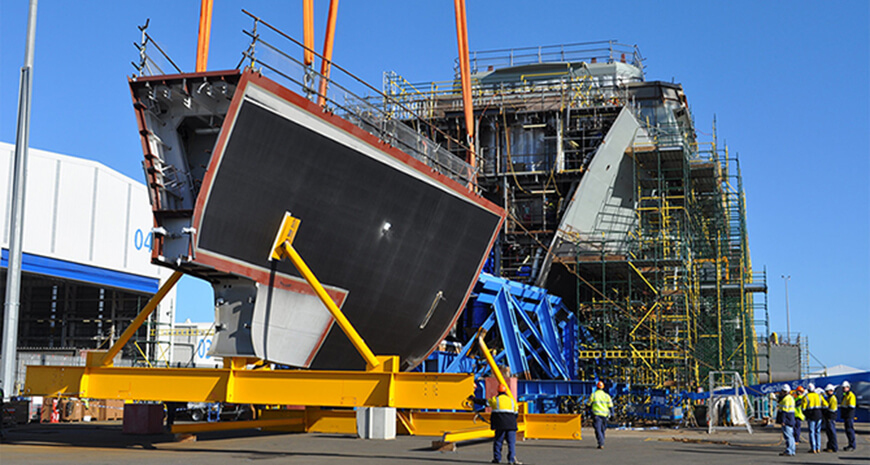Pines for China, a new shipment
They will pilot test in Fray Bentos for 18 thousand tons and will complete in Montevideo.
This past week the fourth shipment of pine logs to China was made. This is an export of 35 thousand tons that took the ship “Port Alice” consisting of more than 100 thousand trees whose minimum diameter is 20 centimeters at one end, and its length of 5.90 meters. We remember that in the first shipment 105 thousand trees came out, an amount that really does not stop surprising.
Well, speaking of quantities we are told by those who know, that if Uruguay did not plant more pines as of today, it would still export what it has in its current forests for the next 40 years.
Such is the number of pines we have planted, mainly in the northern departments of the country, where it seems that the forests have such continuity that it astonishes any observer. They even affirm that there are stretches of roads and paths that pass in total darkness in broad daylight by the shadows produced by the tall pines on each side.
TRANSPORT
As in the previous shipment, it was counted on the rail transport that brought from Tranqueras (Tacuarembó) to the port, some 800 tons of rolos in 27 wagons, operation that was continued with truck until the side of the ship. But the rest of the 35 thousand tons was made by truck from the forests to its storage tank behind the Cerro and then from here to the port by truck.
In a visit that we made to this deposit we observed that it is here where the fumigation of the trunks is compulsory, after which it is covered with tarpaulins; but it is also fumigated on the ship.
These trees, some 17 years old, are native to lands forested more than 20 years ago by two well-known investment companies, Weyerhaeuser and Cambium. They are the owners of the wood, who sowed the variety of pines in various northern departments, improving quality standards, took care of them, protected them from parasites, cut them down, cut them to size (5.90 meters) and transported them , according to contract, from the forest to the port.
The export company, the one that has the contact with the Chinese company, the one that buys the wood is Muradir whose director, Francisco Rodríguez Morena, goes to the forests and chooses after a global observation, the quality of wood that his client asks for in China. Finally, we have the port operator, Pantzin S.A. who is the one who loads the boat (from the truck to the side of the ship to the warehouse).
We understand that the quality of the exported pines is first class, both to produce pulp and for use in construction and for the manufacture of furniture.
AFE
Returning to the issue of transport, we like the initiative, at least in the pilot plan, to contribute with rail transport of this wood between Tranqueras and the port in order to optimize costs and loading times of the wagons. This is what the Railway Logistics Corporation is doing, a non-state entity that manages the wood freight for AFE that is its owner. As for the speed of the train is appropriate and as we were informed in the port, it would seem that in France freight trains do not exceed 40 kilometers and in the United States would be in those limits. The speed is for passenger trains.
HISTORY
During the 1960s, different governments implemented afforestation policies, but it gained greater impetus when Sanguinetti took office, which generated the famous Forestry Law in 1987, which attracted local and international investment. Another strong push was given by President Lacalle, who introduced attractiveness in forestry investment. The afforestation grew by leaps and bounds, it was already the Shell, of course Otegui, the Caja Bancaria, the Caja Notarial and the Spanish company Eufores, and after them hundreds of companies and cooperatives.
For years we were exporting trunks and eucalyptus chips to Finland, Norway, United States, Spain, Italy, Vietnam, Japan; Now we are exporting pine logs to China. The first export of eucalyptus logs took place on July 25, 1988 on the ship “Searider”, which was 18 thousand tons for Finland in its port of Helsinki, an unusual commercial fact for that time.
DATA
It is well known that wood is a very low price product and we remember that someone told us that from the moment the tree is cut until it is shipped, more than 70% of its value are expenses that are distributed in 17 areas that for our benefit they remain in the country and that is a kind of redistribution of wealth. From the time it is planted until it reaches the ship’s hold, labor and infrastructure costs are left in the country. The freight of maritime transport passes to a foreign shipowner.
FRAY BENTOS
Francisco Rodríguez Morena informed us that they are exploring the possibility of sending a bulk ship to load chips in the port of Fray Bentos up to about 18 thousand tons considering the current depth of the port and the channels of the Uruguay River. For this purpose, they are negotiating with the port authorities and those involved to achieve a chip collection area in cargo operations. “We will load as far as the depth of the channels allows and we will complete the loading of the ship in Montevideo. We would do this not on the next ship but on the sixth. We will study the results. “

